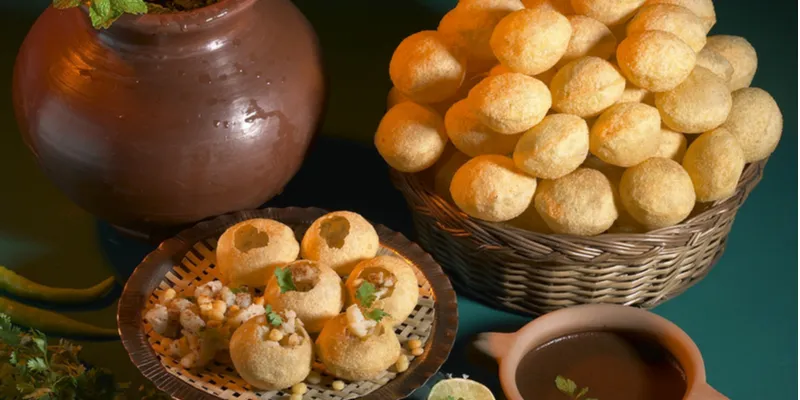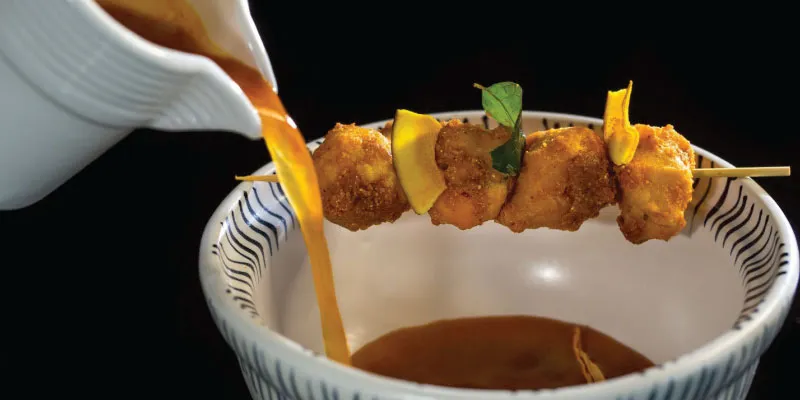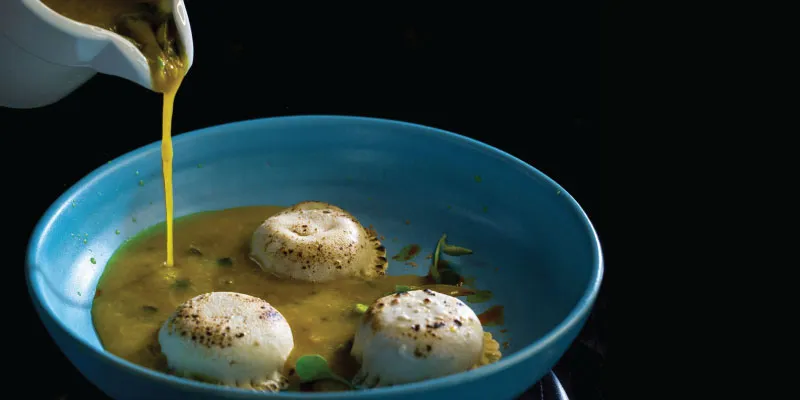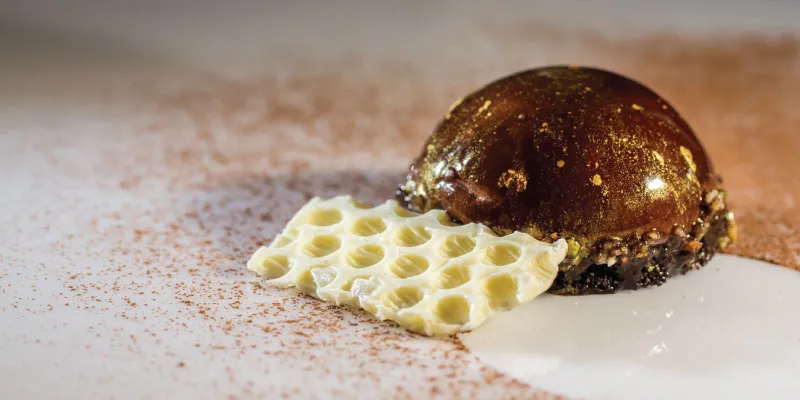Roast pumpkin paddu and mint Donne Biryani: Here’s how chefs add a new dimension to modern Indian cuisine
Meet Chef Akash Tyagi who is using slow food principles to create modern Indian cuisine
The American proclivity to slot everything into a convenient category can be bewildering. Which is why when Americans say Tex-Mex, Chinese or Korean, instead of soaring to the glorious heights of Pork Asado, Peking Duck or Bibimbap, they are reduced to the lowest common denominator of fast food chicken nuggets or seafood omelette. In terms of culinary diversity, India is practically a continent since the term, “Indian food” means various things to a Malayalee, a Punjabi, a Kashmiri and a Bengali.
Prophets are rarely recognised in their own country which is probably why our master chefs Floyd Cardoz, Manish Mehrotra and Gaggan Anand needed to strut their stuff in New York, London and Bangkok respectively before their talent was acknowledged by us homeboys. What this trio of chefs achieved was to lift desi khana from its greasy-spoon-low-hanging fruit image to the realm of Noma, Hakkasan and Daniel’s. In doing so, they proved that a respect for our noble culinary traditions, classic methods and stylish presentation skills were precisely what was needed to put modern Indian food on the global culinary map.

Pani Puri can be served in many variations
Manish Mehrotra redefined the humble “puchka” (paani puri) by serving it with 5 shot glasses of paani and followed it up by stuffing crisp slivers of maple-smoked Canadian bacon in a kulcha. He took juicy spare ribs and paired them with sonth chutney and mango pickle and delighted customers were like, “Dude, this is so awesome!”
Floyd went pedal to the metal at Bombay Canteen where his bold approach was to take pan-Indian flavours and present them in quirky, unusual settings/pairings.
Think tacos stuffed with pork vindaloo on Gujarati thepla and then take the brilliant Bohri dish, Kheema Bheja Ghotala, served with sunny egg yolks peeking through the kheema and brain: a fabulous mélange of texture, flavour and taste.
Slow food and Indian cuisine
Moving down South, we have our very own Raahi Neo Bar & Kitchen in Bengaluru where sous chef Akash Tyagi has his own take on the slow food movement using regional produce and techniques to create modern Indian cuisines.

Akash Tyagi
Hotel management was an obvious choice over engineering for this young chef and later he decided to join a standalone restaurant where he would have the freedom to create instead of being stuck in the rut of rigid hotel chains.
His menu is a culinary showcase of the versatility of cuisines in India. He celebrates local traditional cooking methods using regional ingredients which are unique to the food culture of every region.
“We have dishes from Kodagu to Kaziranga and we’ve tried our best to stay as true as possible to the authentic style. Early in my career I trained under Chef Saurabh Udinia who influenced my food philosophy; apart from him I really admire Chefs Sean Brock and Dan Barber for the pioneering work they’ve done in bringing local farms to restaurant tables.”
As to how they follow the slow food movement, they go by just two golden rules while drawing up the menu.
“Go seasonal and go regional: this is our unifying theme where we’ve stuck to using only seasonal ingredients to maintain optimum flavours and nutrition. Not just fruits and vegetables, even our seafood is seasonal because we don’t want to serve fish caught during the breeding season to do our bit to stop overfishing,” he say
Is Indian food all about gravies and masala?

Dil Leaf Rasam
Most cynics say that desi khana is basically gravies and masalas. What does Akash feel about this?
“No way,” says Akash. “I’m from Delhi, but we don’t have butter chicken on our menu. We’ve totally moved on, and gravies are so yesterday. We serve Yak Cheese Datchi from Sikkim, we do Rajasthani Sev Mangod and Bengalis will relish Mochar Ghonto, made with banana blossom. For simple homestyle flavour, our Chicken Rice Mizo style is a shining example of the fact that Indian food is much, much more than gravies and masala. Our roast pumpkin paddu and our sattu kachori served with suran and brinjal chonka rocks.”
Other intriguing menu choices include a local donne biryani cooked in leaves and redolent with the flavours of fresh mint and coriander and a smoky Hyderabad style haleem.
So, what precisely is modern Indian all about? Looks, texture or flavour?
Akash diplomatically concedes that all these aspects are important but ultimately, it’s the flavour that decides the fate of a dish. No matter how beautiful a dish looks, it has to taste good. Having said that, he accepts that texture is the second most important aspect of food, since this is what simulates the appetite and makes the last bite taste as good as the first.

Dak Bungalow Dal with Beetroot Oil
Akash recently visited Coorg where he was blown away by the most flavourful crab soup and Pandi Curry at a roadside shack which is still lingering in his mind.
“Everything was fresh, prepared on order and cooked over traditional wood fired stoves which brought in a new dimension in terms of flavour,” he recalls.
What then is the ethos of modern Indian and the slow food movement?

Chocolate dessert in a new avatar
“Dining is a very intimate experience,” says Akash. “At the end of the day, you have to feel the pressure that your guests have voted with their feet and picked you and you have to step up to the plate and justify their choice. This pressure acts like a motivational force and you just can’t afford to drop the catch. On a more caring note, he feels that because we live in a country where 800 million people are undernourished as per the global hunger index, it is only fair that chefs follow a zero-waste, environmentally responsible policy.”









